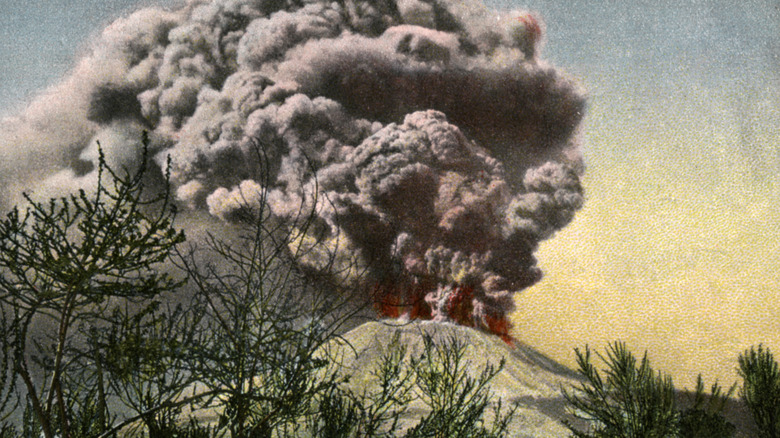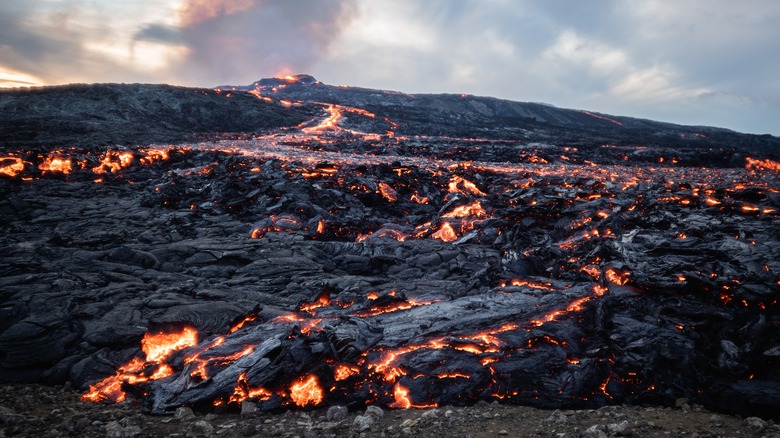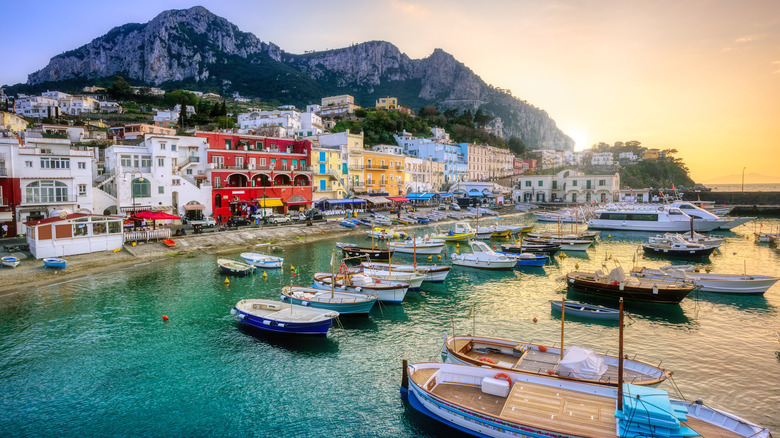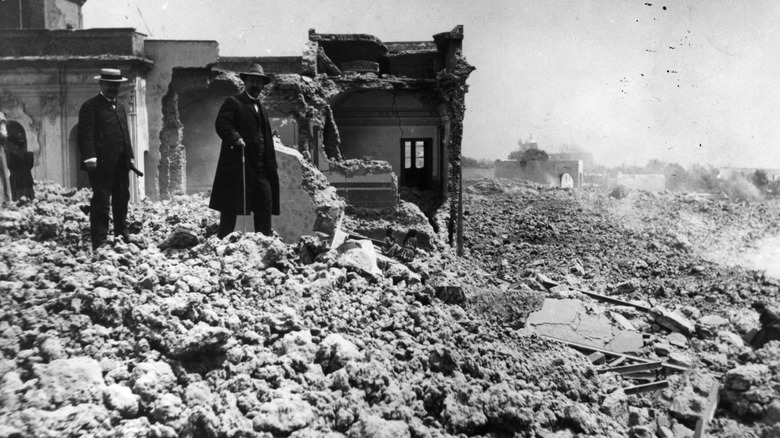What We Know About The Deadly 1906 Eruption Of Mt. Vesuvius
Mount Vesuvius in southern Italy has erupted more than 20 times between 1660 and today, per Britannica. It is considered one of the most dangerous volcanoes in the world, posing a threat to numerous Italian cities, especially Naples (via Live Science). It is currently Europe's only active volcano. Though it has exploded many times throughout history, one explosion in 1906 was particularly deadly.
William Herbert Hobbs, in the paper "The Grand Eruption of Vesuvius in 1906," reports that on April 5, 1906, a cloud of ash built up over the mouth of the volcano. Without warning, a hole opened on the side of the mountain — the volcano now had two mouths, and both began to flow with lava towards the towns below. The National Centers for Environmental Information reports that three people died from the onslaught of lava.
According to The New York Times, when the volcano erupted, it spewed forth a 1,000-foot-tall jet of fire and smoke. Huge rocks weighing one ton each were hurled from the volcano. And, at the same time, lava oozed from the volcano's mouth at a rate of 21 feet per minute, and at its widest, the stream of lava was 200 feet across.
Superheated lava and ash
The heat and steam from the lava baked any grass and vegetation before the lava could even touch it; a local cemetery was entirely covered over by lava (via The New York Times). The ground rumbled constantly as the towns of Naples, Portici, Torro del Greco, Ottajano, and Boscotrecase were covered in thick layers of cinders and ashes, per The New York Times.
"The Grand Eruption of Vesuvius in 1906," (via The University Chicago Press) observes that Mount Vesuvius covered the town of Boscotrecase with 12 feet of lava, in some places. Even for people who escaped the superheated lava by heading indoors, the lava was dense enough to crush the walls of homes. Lava also tends to be so hot that it doesn't always burn things like trees — it can be hot enough to make them instantly explode on contact.
Forced from their homes to find fresh air to breathe, some people congregated in churches, praying for the natural disaster to stop, reports The New York Times. A mix of black sand, hot mud, ash, and rocks of all sizes spewed out of the volcano, so people began carrying umbrellas to avoid getting hit by the molten debris. Unlike previous eruptions, where people could see it happening, there was so much ash and dust in the air during the 1906 explosion that it was hard to see anything.
Praying for salvation
Some residents from Boscotrecase ventured outside and got close to the lava while carrying a statue of St. Anne to pray for a miracle (per The New York Times). Towns like Somma and San Guiseppe fared the worst, as three feet of ash settled over every open surface, per "The Grand Eruption of Vesuvius in 1906."
In particular, San Guiseppe was a site of numerous deaths. As the volcano started to erupt, people gathered in churches to pray, but the falling detritus crushed them to death in their places of worship. In one church roof collapse, 105 people were killed, while 90 were injured as The National Centers for Environmental Information details.
In Naples, the roof of an entire marketplace collapsed, injuring and killing those inside, according to "The Grand Eruption of Vesuvius in 1906." And, for citizens who had poorly constructed houses, the volcano's eruption was a death sentence, as the weight of accumulating ash forced the roofs to cave in. The death count after this deadly April 1906 eruption amounted to 350 people, while 300 were injured.
Will Vesuvius explode again?
One man from the town of Boscotrecase examined the volcano's crater a few days after the eruption — and he reported back that lightning seemed to be constantly striking the crater (per "The Grand Eruption of Vesuvius in 1906"). The higher he climbed up the mountain, the more the volcano seemed to rumble, making loud noises as often as every five to ten minutes. The rumbling went on for days and days after the initial explosion.
Britannica reports that after the 1906 eruption, a whole forest of trees was planted onto the sides of Vesuvius, so that during the next explosion, mudslides would have less of an impact on the people living below. Mount Vesuvius is due to explode again any day now, since it hasn't erupted since 1944 (via History). Today, 3 million people live in the towns surrounding Vesuvius, making it one of the most potentially dangerous sites in Italy, and possibly the world.



